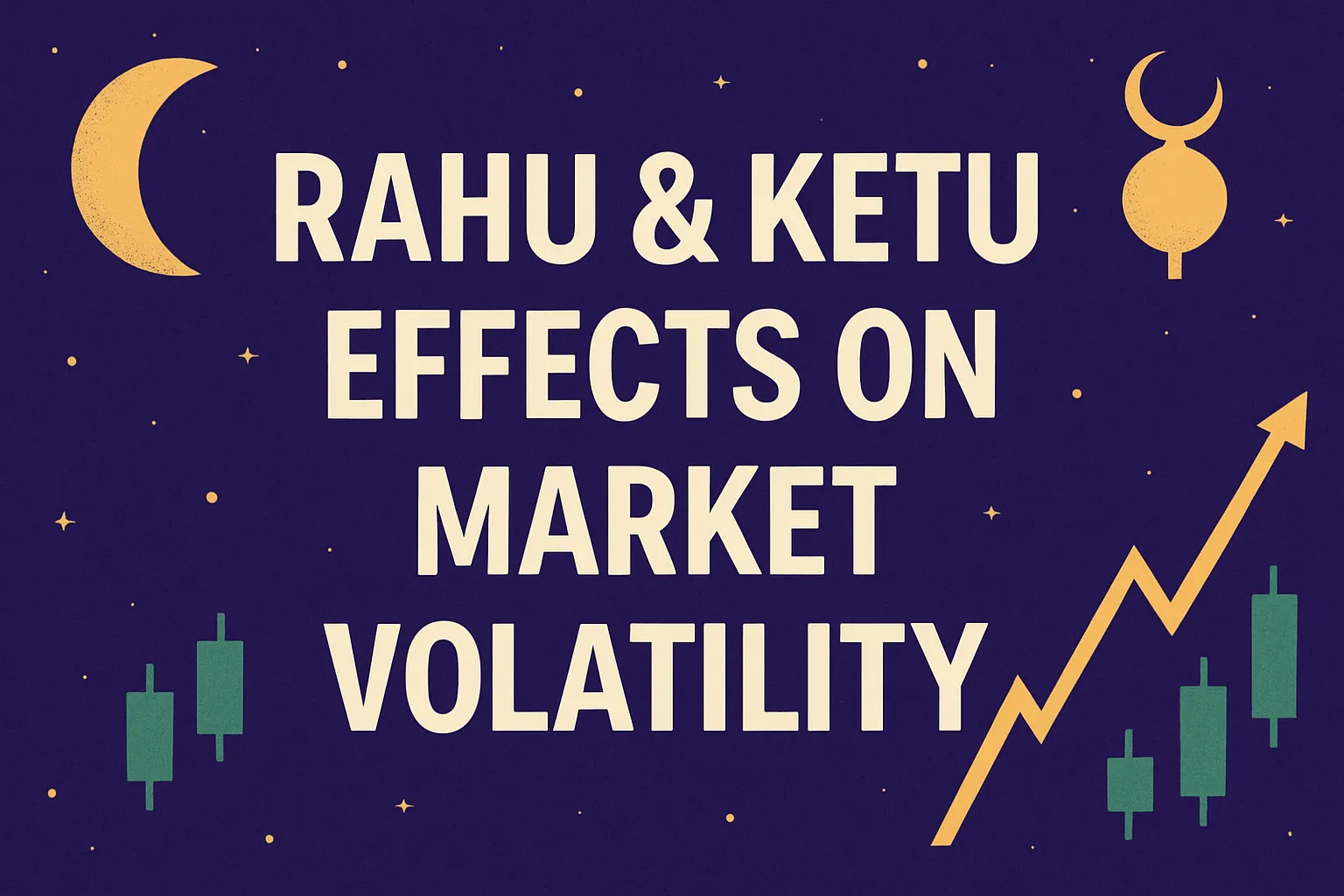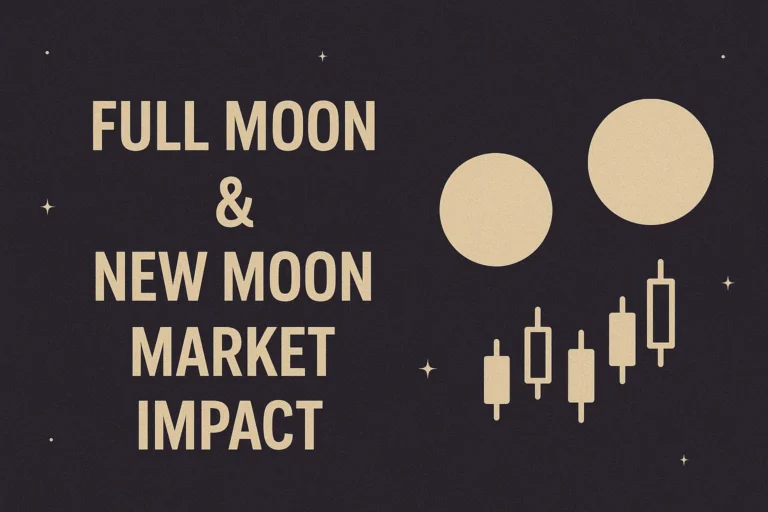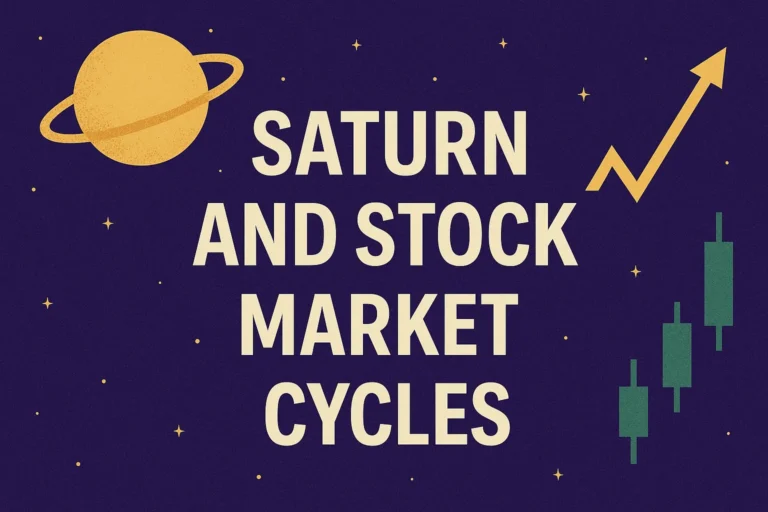Rahu & Ketu Effects on Market Volatility
In Vedic astrology, Rahu and Ketu are shadow planets—mathematical points rather than physical celestial bodies—but their influence on human behavior and financial markets is profound. Often associated with illusion, unpredictability, and karmic shifts, these nodes play a significant role in driving market volatility, speculation, and sudden reversals.
This article explores how Rahu and Ketu impact the stock market, especially during transits and eclipses, and how traders can navigate the waves they create.
Who Are Rahu and Ketu?
- Rahu represents obsession, ambition, material desires, and unconventional methods.
- Ketu symbolizes detachment, confusion, sudden endings, and spiritual introspection.
Together, they form the lunar axis, constantly influencing emotions and perception—two major forces behind market moves.
They always move retrograde and shift signs roughly every 18 months, marking critical phases in both personal and collective experience, including stock market behavior.
How Rahu Influences the Market
- Encourages Risk-Taking and Speculation
Rahu’s transit often leads to excessive optimism or greed. Retail investors are drawn into risky bets or new sectors (e.g., crypto, penny stocks, tech). - Triggers Unusual Price Swings
Markets may behave irrationally during Rahu phases, with sudden spikes, unexpected breakouts, or bubbles forming. - Favors Unconventional Trends
Stocks outside the mainstream—like small caps, disruptive tech, or startups—often gain attention. - Amplifies Hype
Rahu’s influence is tied to mass psychology and media. News-driven trading becomes dominant.
How Ketu Affects the Market
- Brings Confusion and Pullbacks
Ketu’s energy is spiritual and introspective, leading to hesitation and market corrections. - Sharp Reversals and Sudden Losses
Ketu doesn’t build gradually—it often triggers sudden collapses or trend breaks without clear warning. - Reduces Participation
Traders may feel uncertain, leading to reduced volumes or sideways markets. - Detachment from Fundamentals
Investors may become disconnected from logical reasoning, misjudging value and risk.
Market Phases Influenced by Rahu & Ketu
| Transit Phase | Market Effect |
|---|---|
| Rahu in Aries (2022–2023) | Rise in aggressive trades, options activity, and meme stocks |
| Ketu in Libra (2022–2023) | Confusion in banking/finance sector and relationship-based stocks |
| Rahu–Ketu Eclipse Axis | Peak volatility, irrational trading, fear and greed extremes |
Eclipses and Extreme Volatility
Solar and lunar eclipses occur near Rahu and Ketu. These periods are historically associated with:
- Unpredictable market moves
- Panic selling or euphoric buying
- Misinterpretation of economic data or news
Traders are advised to limit exposure or avoid fresh trades during eclipse windows unless strongly aligned with technical signals.
How to Trade During Rahu–Ketu Phases
- Reduce Position Sizes
Expect volatility. Manage risk by scaling down trades. - Avoid Overleveraging
Rahu may tempt you with high-reward trades—don’t give in unless backed by solid confirmation. - Follow Technical Support/Resistance Strictly
Astro volatility should be filtered through chart levels for actual entries. - Watch News and Rumors
Rahu loves misinformation. Double-check sources before reacting to headlines. - Use Moon Nakshatra as a Filter
On Rahu-ruled Nakshatra days (Ardra, Swati, Shatabhisha), expect erratic price behavior.
Conclusion
Rahu and Ketu inject unpredictability, emotional extremes, and momentum shifts into financial markets. Traders who understand their cycles and transits can prepare for these phases with caution and clarity. These shadow planets may not be visible in the sky, but their impact is felt in every volatile candle on the chart.
By combining astrology with disciplined trading systems, investors can navigate Rahu–Ketu-driven volatility with awareness rather than anxiety.
FAQs
1. How often do Rahu and Ketu change signs?
Approximately every 18 months. These sign changes mark new themes in volatility and sector shifts.
2. Are Rahu periods always bullish?
Not necessarily. They may be bullish in speculative sectors but often come with high risk and sudden drops.
3. What’s the best way to trade during eclipses?
Trade less or stay out. If trading, use strict stop-losses and avoid aggressive positions.
4. Can Rahu cause stock market bubbles?
Yes, especially in emerging tech, crypto, or hype-driven segments.
5. Should I completely avoid trading during Rahu–Ketu conjunctions?
It’s best to be cautious. Watch technical levels closely and avoid emotional decisions.


